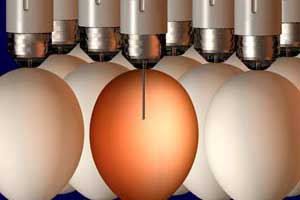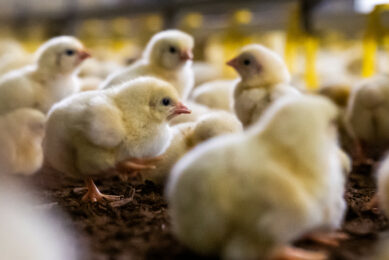In ovo prebiotic on poultry meat quality studied

Raw poultry meat is generally very soft and, when cooked, it can even be cohesive. However, a newer emerging quality issue in poultry is the poor cohesiveness of meat related to immaturity of intramuscular connective tissue.
It is believed that genetic progress has put more stress on the growing bird and has resulted in histological and biochemical modifications of the muscle tissue by impairing some meat quality traits.
Meat is a complex, composite substance. It consists of myofibers, connective tissue, and lipids. Collagen, the major component of the intramuscular connective tissue, plays a key role in determining meat toughness of different domestic animals, including poultry. The quality and composition of poultry meat are influenced by factors such as genotype, sex, age, diet, rearing conditions, pre-slaughter treatment of birds and possibly by probiotics supplied in feed.
The effects of the administration of bioactive compounds including bacteria on meat quality are not conclusive. A major problem is their efficient administration under fully controlled conditions. To eliminate some of the factors, in ovo technology has been used. This technology enables administration of the given substance in a solution, directly inside the eggs during their incubation.
In this study the effect of in ovo injection of prebiotics and synbiotics on growth performance, meat quality traits (cholesterol content, intramuscular collagen properties, fiber measurements), and the presence of histopathological changes in the pectoral muscle of broiler chickens was studied.
The study
On day 12 of incubation, 480 eggs were randomly divided into 5 experimental groups treated with different mixtures of bioactive compounds (oligosaccharides, oligosaccharides enriched with Lactococcus lactis, Lactococcus cremoris, Lactobacillus acidophilus and Streptococcus faecium bacteria plus lactose). 60 Male hatched chickens, were randomly chosen and were grown to 42 days in cages. Broilers were fed ad libitum commercial diets according to age.
In ovo prebiotic and synbiotic administration had a no effect on investigated traits, but depended on the kind of bioactives administered some effects were measured. Treatment with lactic acid bacteria reduced carcass yield percentages and increased the feed conversion ratio. The abdominal fat, the ultimate pH, and cholesterol were not affected by the treatments. The incidence of histo-pathological changes in broiler chickens from treated groups was low, which did not affect the deterioration of meat quality obtained from these birds.
(G. Maiorano, A. Sobolewska, D. Cianciullo, K. Walasik, G. Elminowska-Wenda, A. Sławińska, S. Tavaniello, J. Żylińska, J. Bardowski and M. Bednarczyk, Poultry Science, 91, 2963-2969)











